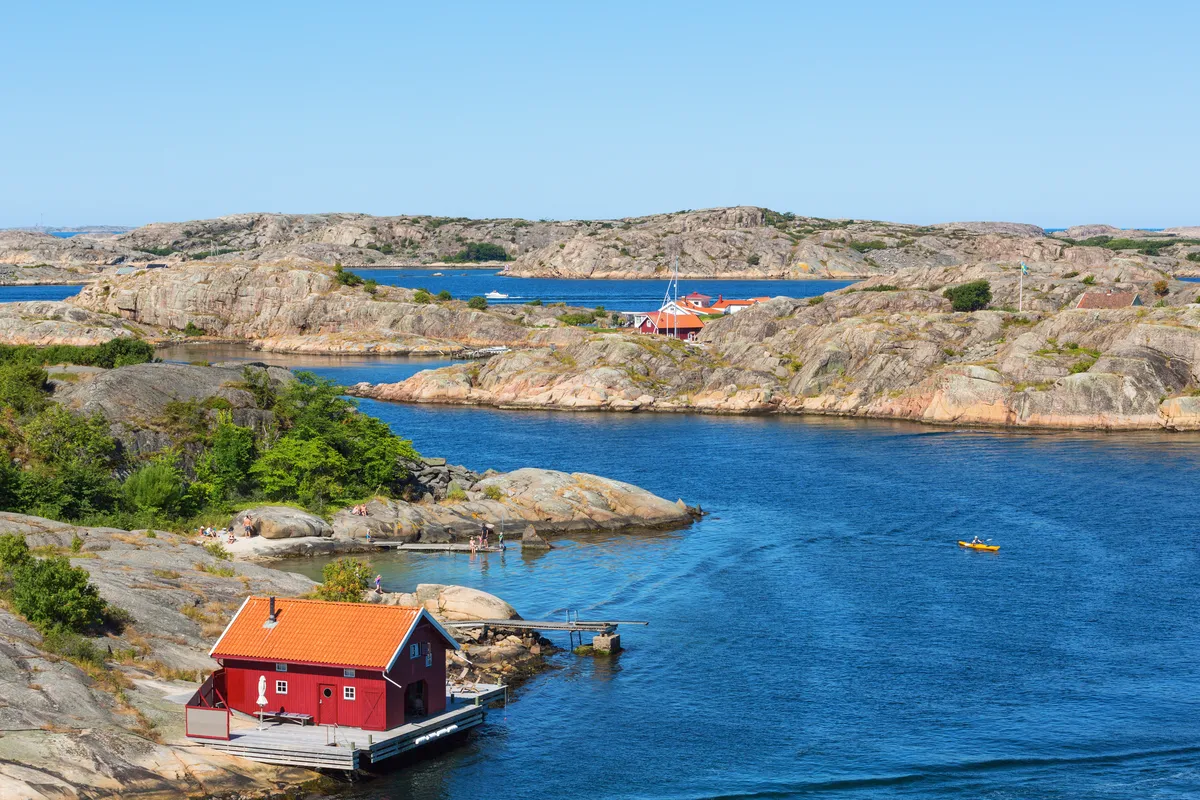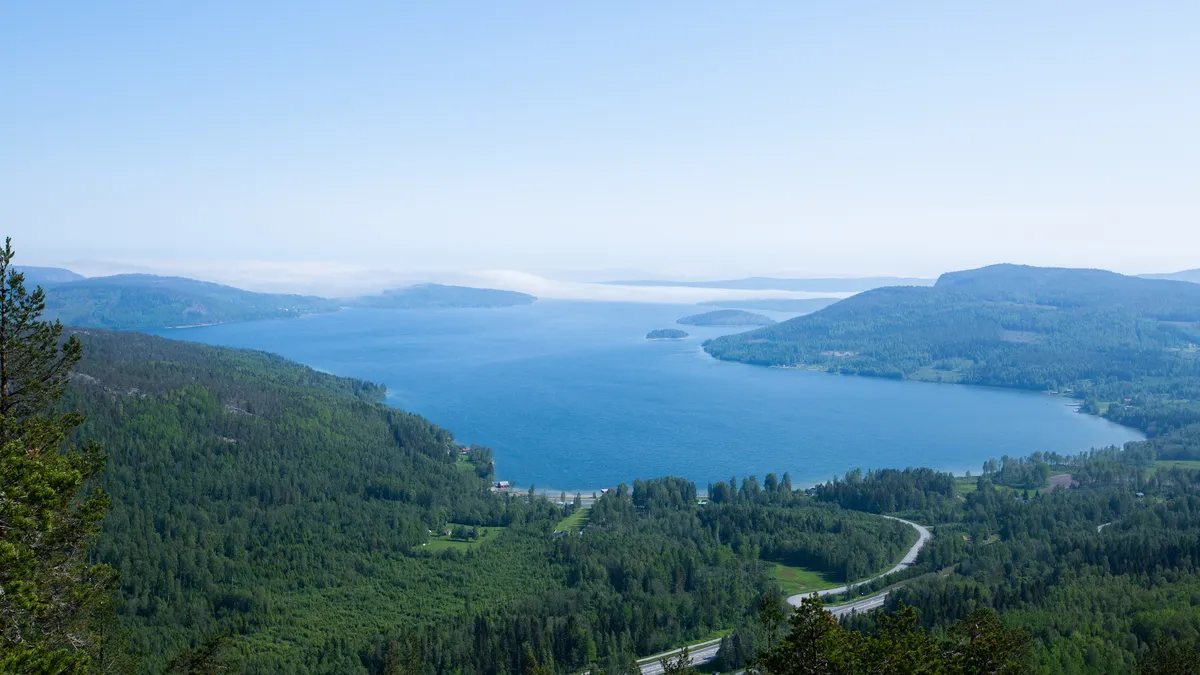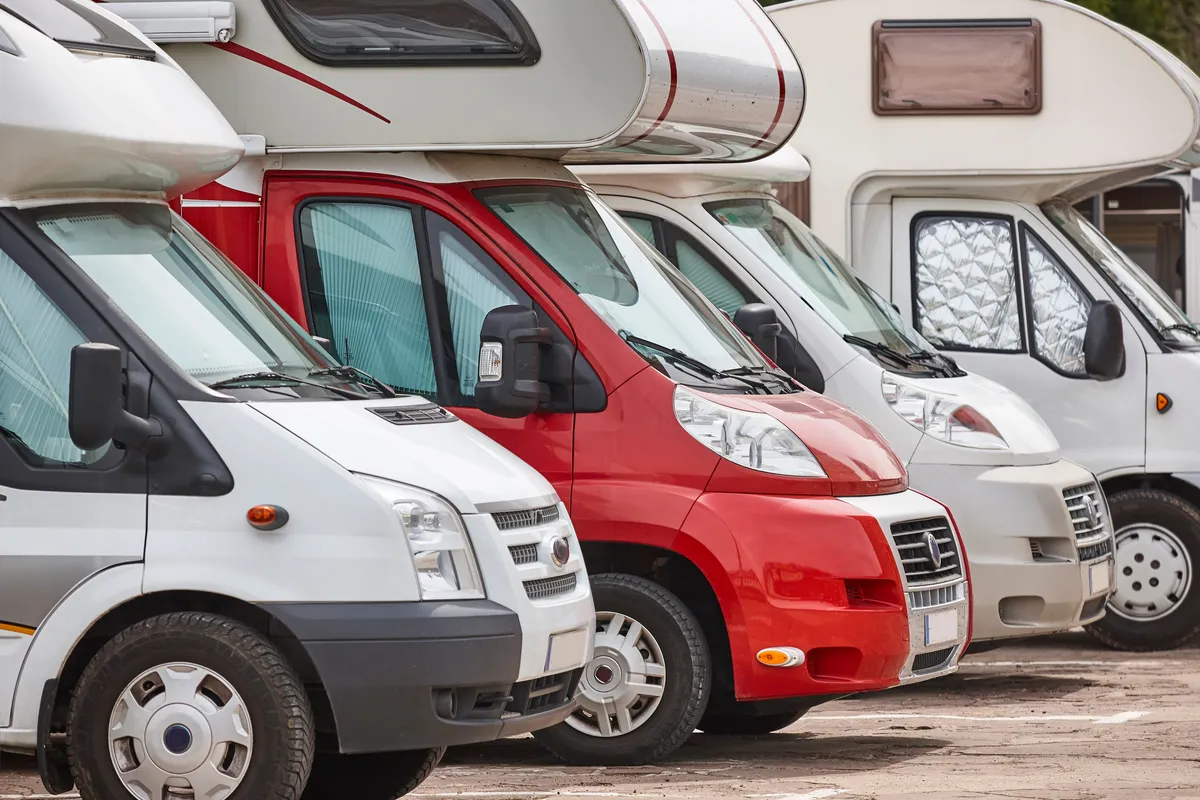Nestled in the northeastern province of Ångermanland along the Gulf of Bothnia, the High Coast of Sweden is a UNESCO World Heritage landscape shaped by dramatic post-glacial land uplift. It is often described as the world’s highest uplifted coastline, with ancient shorelines now sitting roughly 286 meters above today’s sea level, which helps explain the region’s towering cliffs and wide-open views.
What you see on Sweden’s High Coast is a rare meeting of geology and scenery that rewards hikers, campervan travelers, culture lovers, and families in every season.
Sweden’s High Coast: A Landscape Carved by Time
The High Coast's landscape is a testament to the power of natural forces over millennia. The area is distinguished by its dramatic elevation changes, a result of the post-glacial rebound phenomenon. This unique geological process has sculpted a landscape unlike any other, characterized by its rugged cliffs that tower over the Gulf of Bothnia, revealing sweeping panoramas unique to this part of Sweden.

The Archipelago's Charm
The archipelago that dots the coastline adds a serene beauty to the ruggedness of the High Coast. These islands, large and small, are remnants of a landscape continuously shaped by the rising land.
They offer secluded beaches, sheltered bays, and a sense of tranquility that contrasts with the dramatic cliffs. The archipelago is a haven for Swedish wildlife, providing habitats for a variety of bird species and marine life, making it a perfect spot for bird watching and nature photography.
High Coast Outdoor Activities
The High Coast is an outdoor enthusiast's dream, offering a wide range of activities that take full advantage of the diverse landscape. Climbing enthusiasts will find plenty of challenges on the cliffs, while the expansive meadows and pristine forests are perfect for more leisurely pursuits, such as picnicking or nature walks.
The area's natural beauty is accessible to all, from adrenaline seekers to families looking for a peaceful retreat in nature:
- Trails and Treks: Stretching nearly 130 kilometers, the High Coast Trail connects the Hornöberget mountain to Örnsköldsvik, weaving through an ever-changing landscape that showcases the best of the High Coast.
- Diverse Natural Landscapes: Dense forests offer a canopy of green and mountain tops reveal panoramic views of the surrounding area, while sandy beaches offer a place to rest and enjoy the serene beauty of the Gulf of Bothnia. The rugged cliffs present a dramatic backdrop, challenging hikers and climbers alike.
- National park: With its scenic trails and the iconic 40-meter-high mountain crevice Slåttdalsskrevan, the Skuleskogen National Park is a testament to the High Coast's unique geological history and offers a new perspective on the landscape.
- Winter Wonderland and Archipelago Adventures: The High Coast offers activities like cross-country skiing and snowshoeing. The region's archipelago, less crowded than other Swedish hotspots, is perfect for kayaking and exploring the quaint fishing communities that dot the islands, offering a glimpse into the area's rich cultural heritage.

Cultural highlights on Sweden’s High Coast
Nature is only half the story. The High Coast also excels in art, archaeology, and food culture. Mannaminne in Nordingrå is a one-of-a-kind art village and museum complex with over 50 buildings.
Nämforsen at Näsåker preserves one of Northern Europe’s largest rock-carving sites with an on-site Rock Art Museum. In Härnösand, Västernorrlands Museum pairs indoor galleries with an open-air museum. And along the coast, Skeppsmalen hosts the world’s first surströmming (fermented herring) museum.
Best things to do on the High Coast of Sweden
Whether you’re exploring in a rental campervan or visiting by car, train, or bus, use this shortlist to plan flexible days on the High Coast of Sweden:
1. Visit Mannaminne Art Village (Nordingrå)
Explore a hillside “living village” created by artist Anders Åberg, with more than 50 buildings that house galleries, themed mini-museums, workshops, concerts, and outdoor installations. It is one of the most distinctive cultural experiences on the High Coast of Sweden.
Plan a couple of unhurried hours; the setting in the World Heritage landscape makes it easy to combine art, architecture, and short scenic walks nearby.
2. Discover the Nämforsen Rock Carvings and Rock Art Museum (Näsåker)
Walk footpaths and bridges around a world-class rock-art site with roughly 2,300 carvings from the Stone and Bronze Ages etched into islands and riverbanks along the Ångerman River. The seasonal museum adds context with clear exhibits and models.
When river levels are high, the rapids amplify the drama of the setting; in quieter flows, it is easier to linger over individual panels and motifs.
3. Explore Västernorrlands Museum and Murberget Open-Air Museum (Härnösand)
Start indoors with exhibitions that trace about 9,000 years of regional history, art, and everyday life, then continue outside among historic buildings that bring past centuries into focus. This is an ideal cultural anchor early in your trip; it helps decode the chapels, fishing villages, and farmsteads you will encounter across the High Coast.
4. Tour the High Coast Distillery (Bjärtrå)
Join a guided visit at a riverside single-malt distillery with a visitor center, tasting rooms, and a restaurant overlooking the Ångerman River. Warehouse walks and curated flights reveal how climate and cask selection shape flavor.
Non-drinkers and designated drivers can still enjoy the setting, the food, and the behind-the-scenes look at production.
5. Taste award-winning spirits at Hernö Gin (Dala, Härnösand)
Sample small-batch Swedish gin in a countryside setting, where botanical choices and careful distillation are the focus. Tastings and curated experiences highlight the craft story behind each bottle. Pair the visit with time in Härnösand’s museums or a relaxed coastal drive; it fits well into culture-forward itineraries.
6. Stroll Skeppsmalen and drop by the Fiskevistet Surströmmingsmuseum (Skagsudde)
Follow the harbor past classic red boathouses, then step into a compact museum dedicated to surströmming, the region’s famous fermented herring. Exhibits explain fishing traditions, fermentation, and how coastal life shaped local cuisine.
The nearby lighthouse headland adds short walks and wide sea views, making this a rewarding stop in any weather.
7. Go underground at Hemsö Fortress
Descend into a Cold War coastal fortress carved into bedrock, with tunnels, gun positions, and exhibitions that map Sweden’s twentieth-century defenses. After the tour, a café area looks out across the archipelago.
Summer sees the most frequent departures; the site works well as a half-day cultural counterpoint to hikes and island trips.
8. Sail to Ulvön and Trysunda in the archipelago
Ride ferries to two of the High Coast’s most photogenic islands, where fishing heritage, small museums, chapels, and sheltered coves invite slow exploration on foot. Campervans remain on the mainland, which keeps the islands calm and walkable.
Harbor promenades, traditional boathouses, and short coastal paths make these islands ideal for easy, family-friendly days.
9. Hike a signature section of the High Coast Trail
Choose a day-friendly stage of the 135-kilometer trail, divided into nine sections from Hornöberget to Örnsköldsvik. Waymarking, varied terrain, and frequent viewpoints deliver a big sense of place without committing to a full thru-hike.
Section 1 offers bridge panoramas and a strong introduction to land-uplift geology, while mid-trail segments around Skuleberget concentrate scenery and access.
10. Ride the Skuleberget Cable Car or walk Skuleskogen National Park
Glide by cable car to summit panoramas for short trails and an easy café stop, a good fit for mixed-ability groups or rest days. The mountain’s position over the coast gives far-reaching views in clear weather.
If you prefer a wilder feel, follow waymarked paths in Skuleskogen to coastal overlooks and the famous Slåttdalsskrevan, a mountain cleft about 200 meters long and 30 meters deep set among old-growth forest and polished bedrock.
Practical Information for Visitors
Here’s a quick primer to plan your time on the High Coast of Sweden, especially if you’re renting a campervan to enjoy the region’s landscapes with more freedom and flexibility.

Getting There
- By Air: The closest airports are Örnsköldsvik Airport (OER) and Sundsvall–Timrå Airport (SDL), both with easy connections via Stockholm Arlanda.
- By Train: SJ and regional operators connect Örnsköldsvik, Härnösand and Kramfors with Sundsvall and Umeå, which makes rail a comfortable option into the region.
- By Bus: Long-distance Y-buss coaches run from Stockholm along the east coast with stops in the High Coast.
- By Rental Campervan or Car: The E4 highway runs right through the area, placing many trailheads, viewpoints and ferry piers within short drives. The Höga Kusten Bridge marks the southern gateway and is a natural stop.
Getting Around
- Public Transport: Local buses serve the region, connecting major towns and some tourist attractions. However, schedules are limited in rural areas, many remote spots are not covered and crowds are common at popular times, which makes lingering for photos or golden-hour views harder.
- Cycling: The High Coast offers beautiful landscapes perfect for biking in Sweden, with dedicated cycling paths in some areas and bike rentals in major towns.
Accommodation
- Hotels: There are hotels ranging from budget to luxury, offering various amenities and styles. Many hotels are located in scenic areas, providing easy access to nature and outdoor activities.
- Cottages and Cabins: Renting a cottage or cabin is a popular option, offering a cozy and authentic Swedish experience. Many are situated in picturesque locations, ideal for families or groups seeking a more private setting.
- Camping: For the more adventurous, the High Coast has several camping sites located in beautiful natural settings, such as FriluftsByn or Norrfällsvikens Camping, Stugby & Marina.
Traveling with Kids
- Nature Trails: Many trails are accessible for families, offering short and easy hikes with stunning views.
- Beaches: The region's beaches provide a perfect setting for a family day out, with opportunities for swimming and sandcastle building.
- Adventure Parks: Look for adventure parks and outdoor playgrounds that offer fun activities for kids of all ages.
- Educational Sites: Engage with the local culture and history at interactive museums and cultural sites that are interesting for both kids and adults.
The High Coast of Sweden is a destination that promises not just a journey through a breathtaking natural landscape but also an immersion into a rich cultural heritage and culinary tradition. Whether you're an outdoor enthusiast, a history buff, or a foodie, the High Coast offers a unique and unforgettable experience that goes beyond the ordinary.


 By
By








